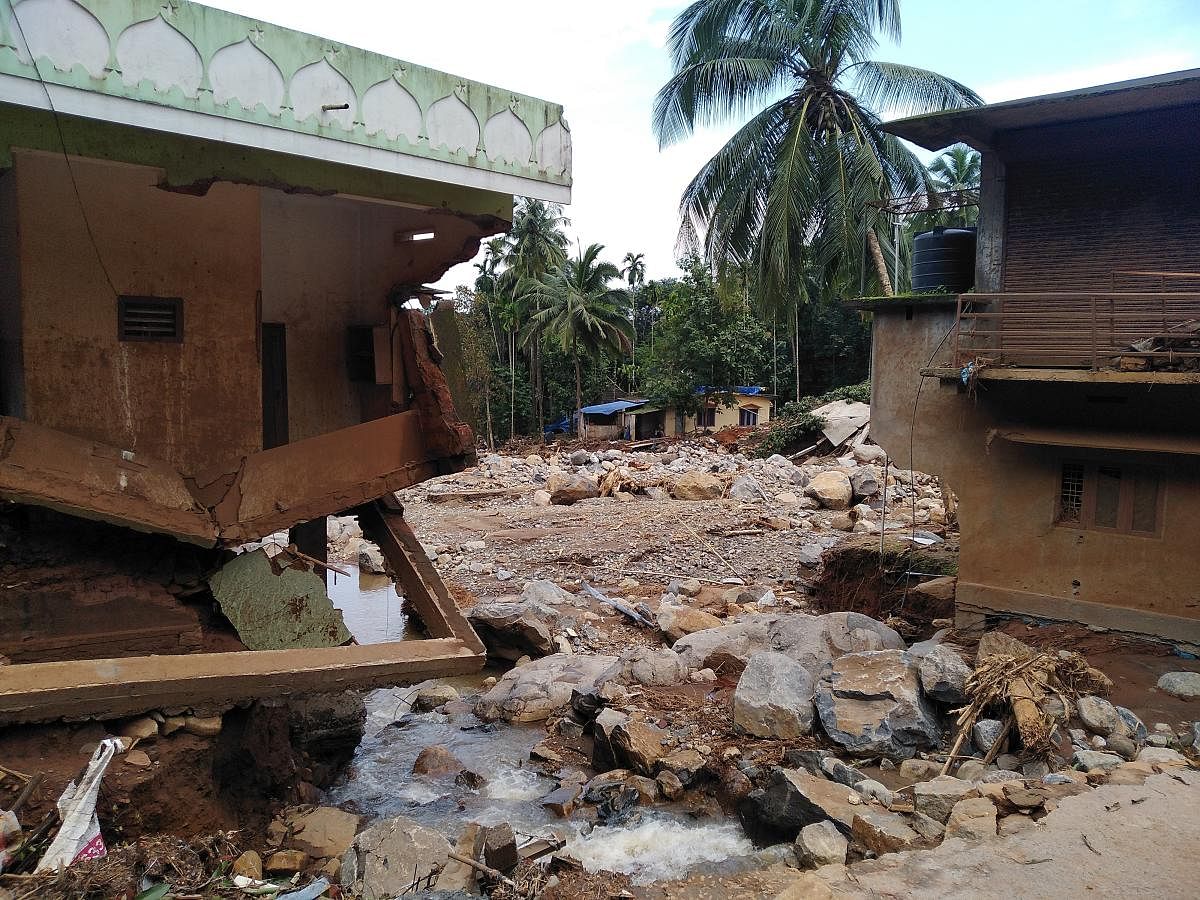
With over 100 being killed in landslides in hilly districts of North Kerala like Wayanad and Malappuram this year, the state government has initiated a fresh exercise of identifying calamity prone areas across the state as well as promoting alternative building construction techniques to prevent the exploitation of Western Ghats.
The Kerala State Disaster Management Authority (KSDMA) has deployed around 50 teams of experts across the state to identify calamity prone human settlement areas.
Preliminary reports from Wayanad district alone found that 105 out of 170 spots examined by the team are prone to calamity, especially landslides. Final reports from the districts are still awaited.
This exercise builds upon a previous study taken up after the massive floods and landslides of 2018 that killed over 400 people.
According to the Geological Survey of India and National Centre for Earth Science Studies, there are 13,000 landslide-prone areas in Kerala and 17,000 spots prone for the earth to cave in. About 1,200 families were staying at calamity prone areas but only 200 of them could be shifted to safer locations after being persuaded by government authorities.
Why were the families reluctant to leave their calamity-hit land for safer shelter?
“The government should be able to convince people by identifying safe places and assigning such lands to them. Then only people would move,” said Dileep, a social worker at Kavalappara in Malappuram district. The district witnessed the most severe landslide this year.
“As many families hit by the calamities have not even received the initial assistance of Rs 10,000 even a month after the calamity, how will people trust the government’s arrangements,” he asked.
Local politicians such as Kalpetta MLA C K Saseendran admit that rehabilitation has been a tough task for the government.
“Identifying safe locations for resettlement is also a major challenge for hilly districts like Wayanad, Malappuram and Idukki. Even the families which irrecoverably lost land and houses in 2018 calamities have not been provided ideal land so far,” he said.
But he added that the people of Wayanad are now prepared for changes as they suffered severe losses in the back to back calamities.
“All families at Puthumala, where a small hamlet was reduced to rubble in the landslide, are now willing to accept the government’s offer to relocate them to a safe location about five kilometres away,” he said.
Experts , meanwhile, feel that the biggest challenge in preventing increasing human activities at ecologically sensitive areas and massive exploitation of natural resources is to bring about a behavioural and mindset change in land use patterns.
“People need to overcome the emotional attachment with the land and move to safe locations. The government is offering Rs 10 lakh for each family to relocate. They can also continue to own the existing lands in the calamity prone areas but should keep off from residing there. People should also understand the need to follow alternative construction methods that require lesser natural resources,” said Shekhar Lukose Kuriakose, KSDMA member-secretary.
According to him, the state has only taken ‘baby steps’ to change the land use practices and construction methodologies that have been prevailing in Kerala over the past few decades.
“Massive awareness needs to be created among the people,” he said.
A noticeable change in the mindset of people of Wayanad was witnessed recently when ecologist Madhav Gadgil, who earlier faced resistance from locals over his suggestions of restrictions on construction activities in the Western Ghats, received a warm reception when he turned up for a seminar there.
Alternative construction
Experts also feel that action is needed to curb the functioning of illegal quarries. The dimension of the illegal quarrying activities in Kerala is such that even government agencies were unable to give exact statistics (see box).
The Assembly committee report on Kerala floods in 2018 categorically said that functioning of authorised quarries and manifold illegal quarries along the Western Ghats of Kerala was a key triggering factor for natural calamities, especially landslides and caving in of earth.
If people adopt alternative construction methods like prefabrication, the demand for natural resources like rock and sand will come down. This would lead to the natural death of the illegal quarrying activities, they said.
Experts point out that it is not the dearth of scientific studies but the lack of will of political leaderships to take action that has led to massive damages in natural calamities.